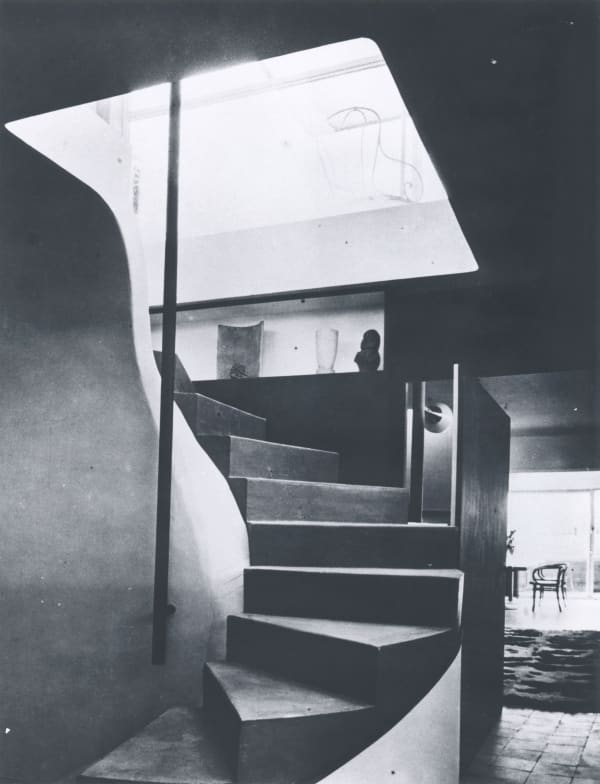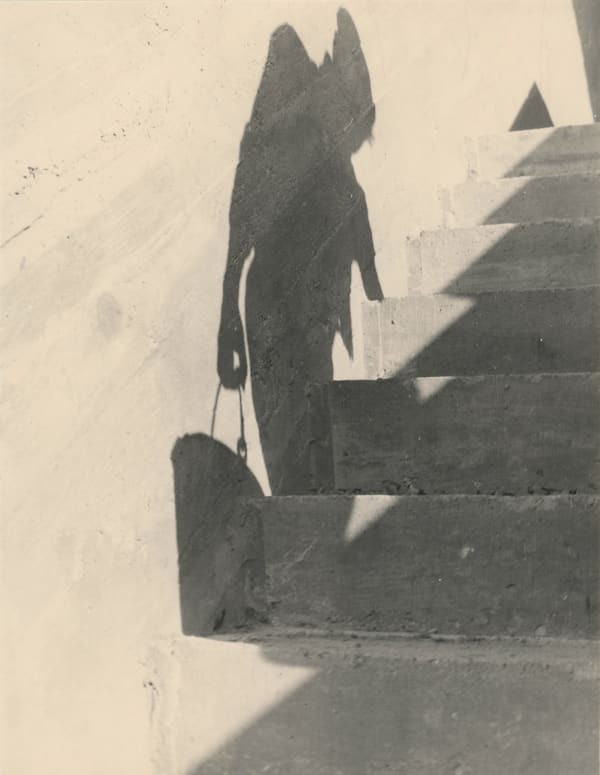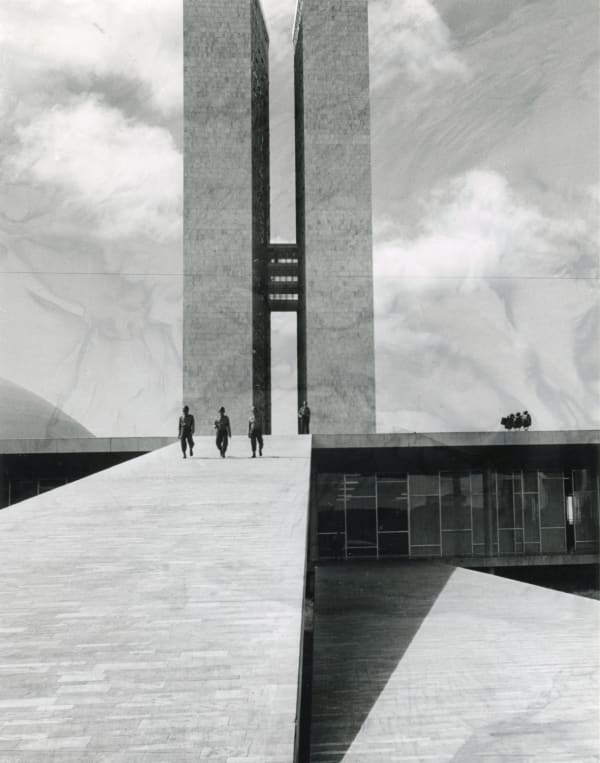Works
-
 Chandigarh, Architect: Pierre Jeanneret, c.1955
Chandigarh, Architect: Pierre Jeanneret, c.1955 -
 Villa Savoye, Poissy, 1961
Villa Savoye, Poissy, 1961 -
 Appartement de Le Corbusier, Immeuble Porte Molitor, 1950
Appartement de Le Corbusier, Immeuble Porte Molitor, 1950 -
 Untitled
Untitled -
 Untitled, 1990
Untitled, 1990 -
 Unité d'Habitation, Marseille, 1949
Unité d'Habitation, Marseille, 1949 -
 Congrès National, Brasilia, Architecte: Oscar Niemeyer, 1961
Congrès National, Brasilia, Architecte: Oscar Niemeyer, 1961 -
 Brasilia, Cathedral (Oscar Niemeyer), 1961
Brasilia, Cathedral (Oscar Niemeyer), 1961 -
 Église de la Médaille de la Vierge Miraculeuse, Mexico City, Architecte : Félix Candela, 1961
Église de la Médaille de la Vierge Miraculeuse, Mexico City, Architecte : Félix Candela, 1961 -
 Architect: Kanvinde, c.1955
Architect: Kanvinde, c.1955 -
 Cabanon à Cap Martin - Roquebrune, 1957
Cabanon à Cap Martin - Roquebrune, 1957 -
 Chalet de Méribel, Charlotte Perriand, 1961
Chalet de Méribel, Charlotte Perriand, 1961 -
 Chalet de Méribel, Charlotte Perriand, 1961
Chalet de Méribel, Charlotte Perriand, 1961 -
 Chalet de Méribel, Charlotte Perriand (her home), 1961
Chalet de Méribel, Charlotte Perriand (her home), 1961 -
 Eiffel Tower, 1945
Eiffel Tower, 1945 -
 Eiffel Tower, 1949
Eiffel Tower, 1949 -
 Entrée de Av. Suffren, Unesco, Paris, Architectes : Marcel Breuer, Pier Luigi Nervi, Bernard Zehrfuss
Entrée de Av. Suffren, Unesco, Paris, Architectes : Marcel Breuer, Pier Luigi Nervi, Bernard Zehrfuss -
 Hôtel Martel, Rue Mallet Stevens, Paris, Architecte: Mallet-Stevens, 1976
Hôtel Martel, Rue Mallet Stevens, Paris, Architecte: Mallet-Stevens, 1976 -
 Institut du Monde Arabe, Paris, Architecte: Jean Nouvel, 1988
Institut du Monde Arabe, Paris, Architecte: Jean Nouvel, 1988 -
 Le Corbusier arrives in Delhi, India, 1952
Le Corbusier arrives in Delhi, India, 1952 -
 Maison de Verre, Rue St Guillaume, Pierre Chareau
Maison de Verre, Rue St Guillaume, Pierre Chareau -
 Petite fille, Inde, 1955
Petite fille, Inde, 1955 -
 Ronchamp Maquette
Ronchamp Maquette -
 Ronchamp 7, c. 1953/54
Ronchamp 7, c. 1953/54 -
 Ronchamp, c. 1954
Ronchamp, c. 1954 -
 Unesco, Paris, Salle de Conférence, Architect: Pier Luigi Nervi
Unesco, Paris, Salle de Conférence, Architect: Pier Luigi Nervi -
 Unité d'Habitation, Marseille, 1952
Unité d'Habitation, Marseille, 1952 -
 Unité d'Habitation, Nantes-Rezé, 1954
Unité d'Habitation, Nantes-Rezé, 1954 -
 US Embassy, Karachi, Architect: Neutra, 1961
US Embassy, Karachi, Architect: Neutra, 1961 -
 Villa Savoye, Poissy, 1961
Villa Savoye, Poissy, 1961
Biography
Lucien Hervé is considered to be one of the great architectural photographers of the 20th century. He collaborated with Le Corbusier from 1949 until the architect’s death in 1965, developping a great rapport. Le Corbusier even once pronounced Hervé to have 'the soul of an architect.' In 1949, Hervé travelled from Paris to Marseille to see Le Corbusier’s recently designed housing complex, Unité d'Habitation. Awed by the groundbreaking modern design, Hervé took 650 photographs of it in a single day and it was from then onwards they worked closely with one another.
Through light and shadow, he defined the dialogue between substance and form. By delineating a strong contrast between the light and shadows in his subject as well as placing emphasis on building details, Hervé was able to communicate the depth of a room, the surface of a wall, or the strength of a building's framework.
Born 1910 in Hungary, Hervé (born László Elkán) moved to Paris at the age of 19 and earned French citizenship in 1938. During World War II, he was captured by the Germans, escaped and became a member of the French Resistance under the name of Lucien Hervé, which he kept thereafter. After the war he left politics behind to write for art journals. It was one of his editors, in fact, who suggested he visit Unité d’Habitation. Hervé began experimenting with photography, over or underexposing images and often severely cropping them to attain unusual compositions following the work of avant-garde artists such as Piet Mondrian, László Moholy-Nagy, and Alexander Rodchenko.
HERVÉ APPROACHED HIS SUBJECTS SEEKING NOT ONLY TO DOCUMENT THE BUILDINGS HE WAS COMMISSIONED TO PHOTOGRAPH BUT ALSO, ESPECIALLY, TO CONVEY A SENSE OF SPACE, TEXTURE, AND STRUCTURE.
- Olivier Beer
Exhibitions
-

Lucien Hervé
6 Sep - 10 Oct 2014The Michael Hoppen Gallery is delighted to announce an exhibition of photographs by Lucien Hervé to run alongside Constructing Worlds, Photography and Architecture in the Modern Age at the Barbican...Read more -

Made in Hungary
Group Show 9 Jul - 24 Sep 2011A group show exploring the great Hungarian photographers. DocumentaryRead more -

Lucien Hervé
3 Sep - 11 Oct 2008“It is known that Le Corbusier was interested in the metamorphic process unique to photography” the inverting of black and white from negative to print. It offered the analogy of...Read more
News
Enquire


































